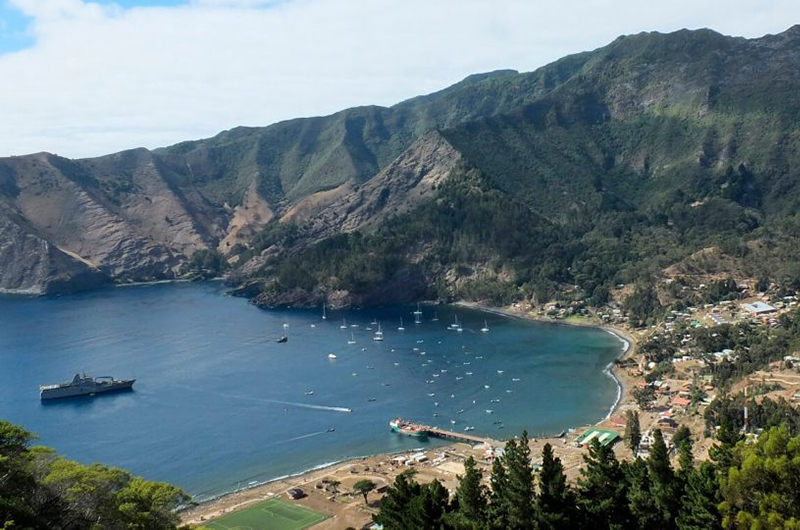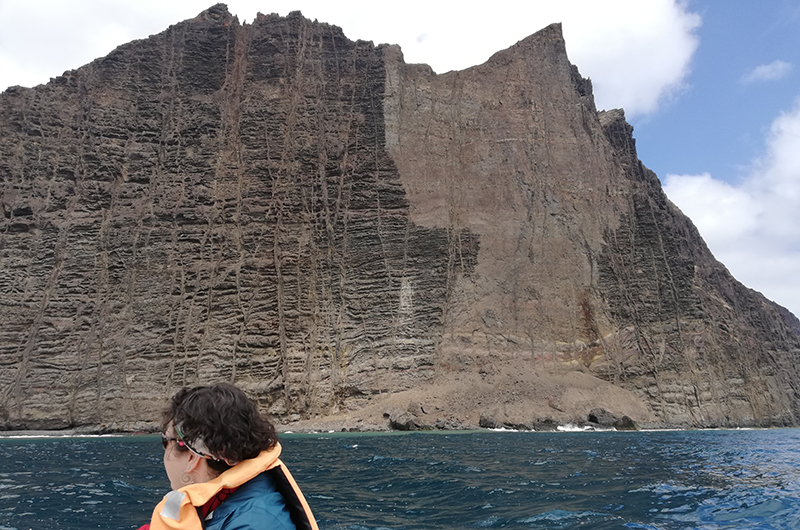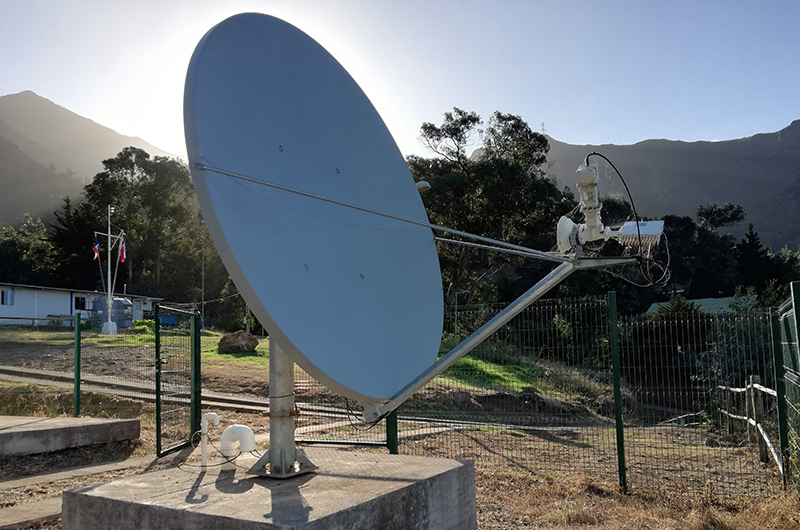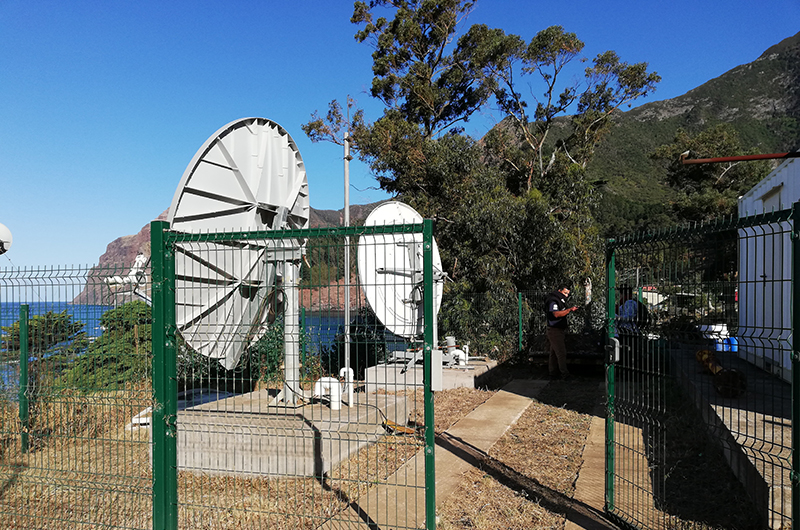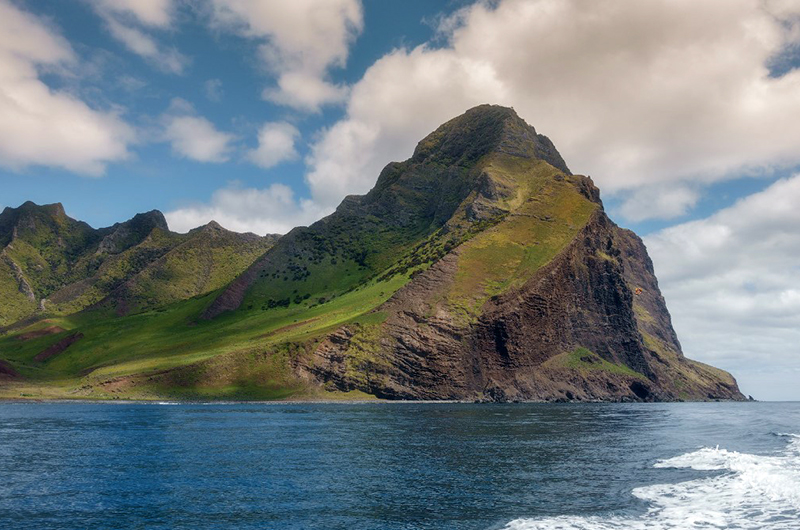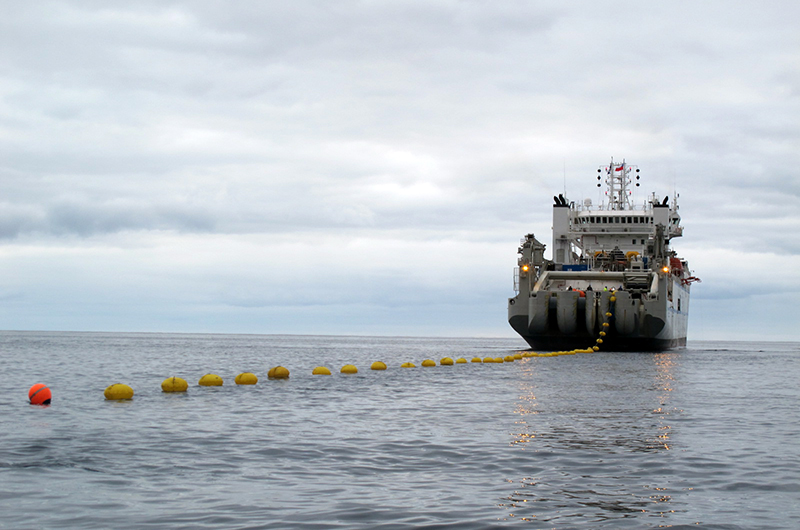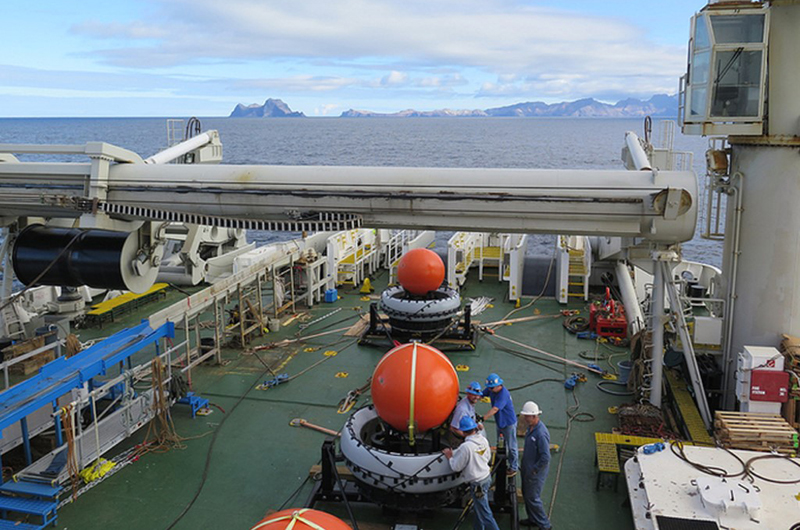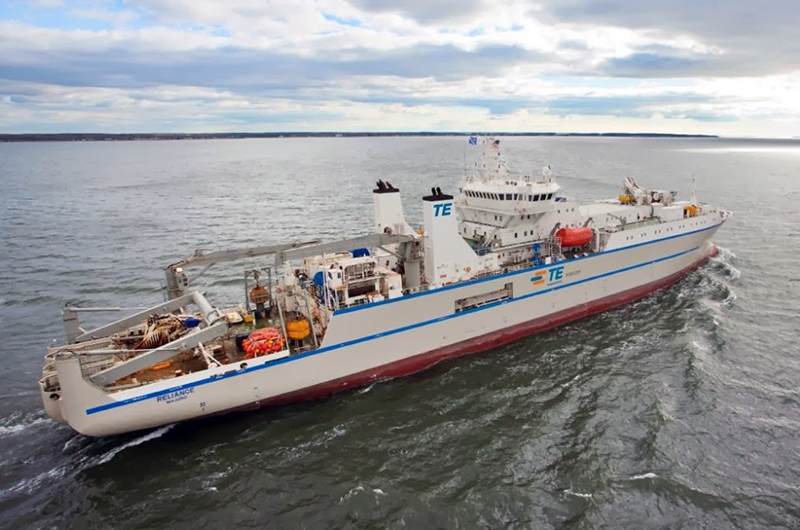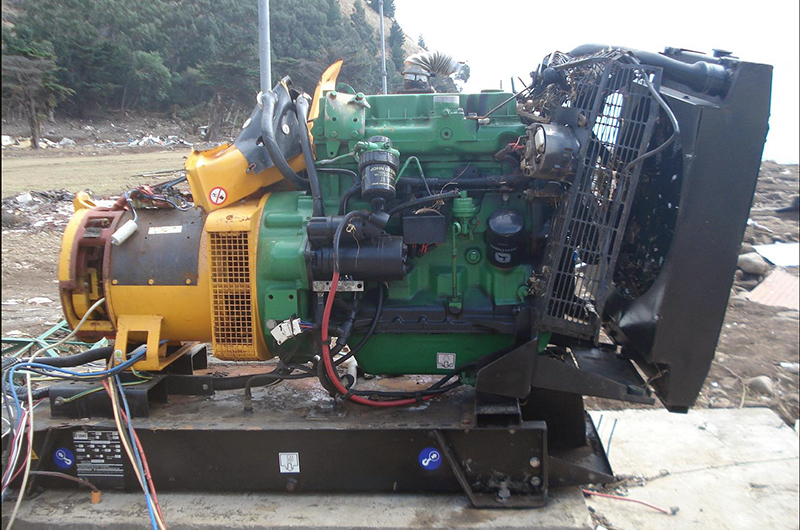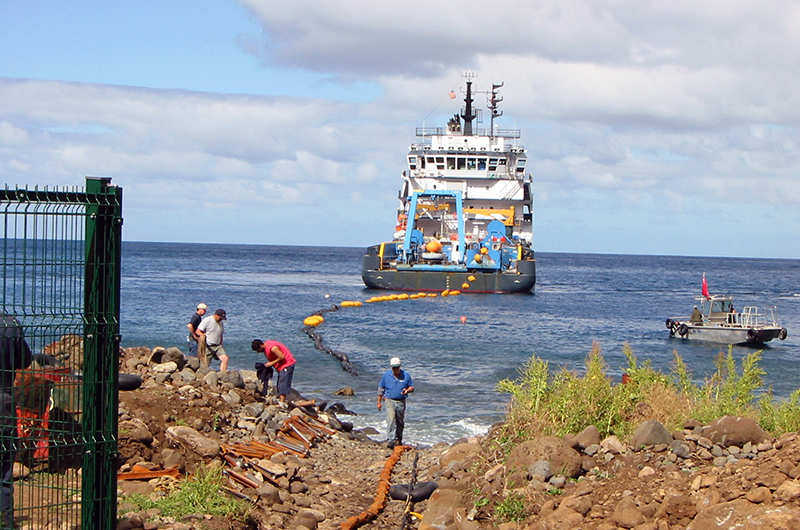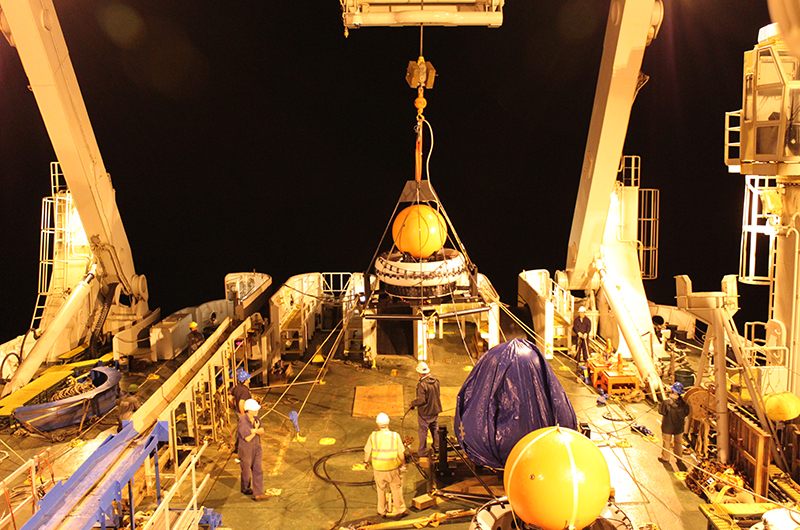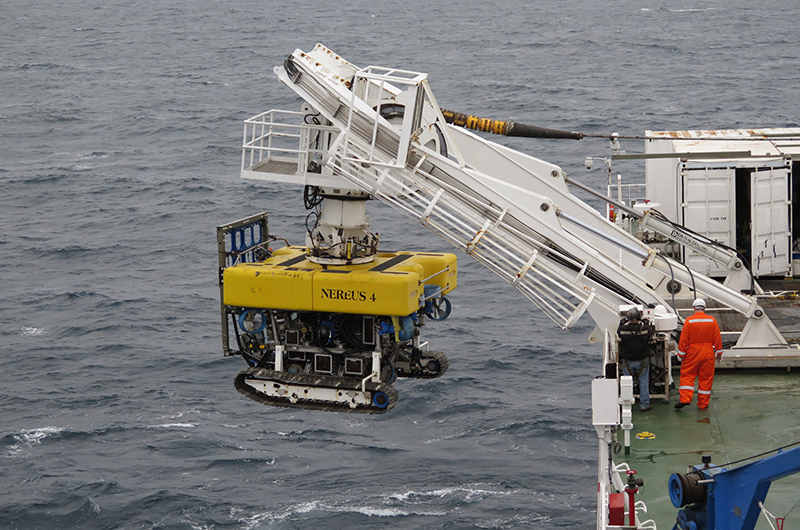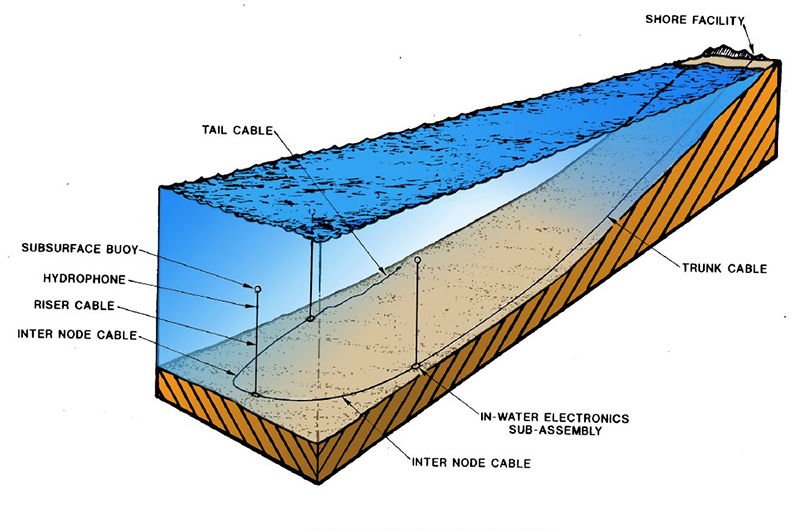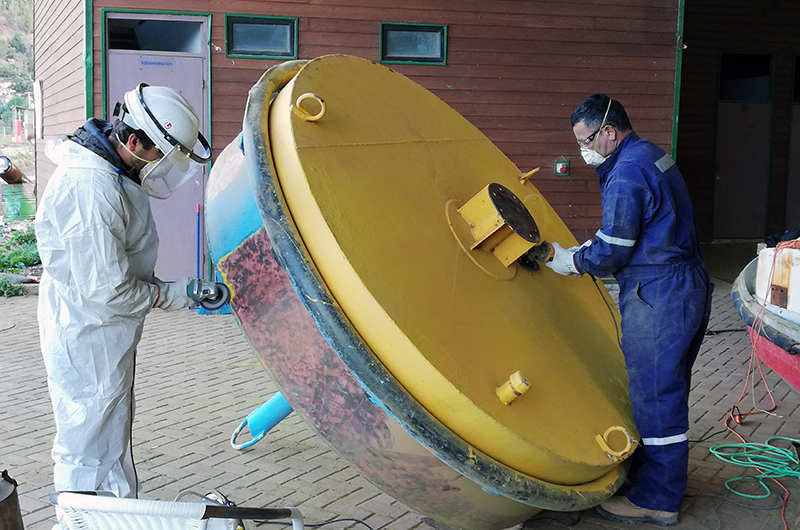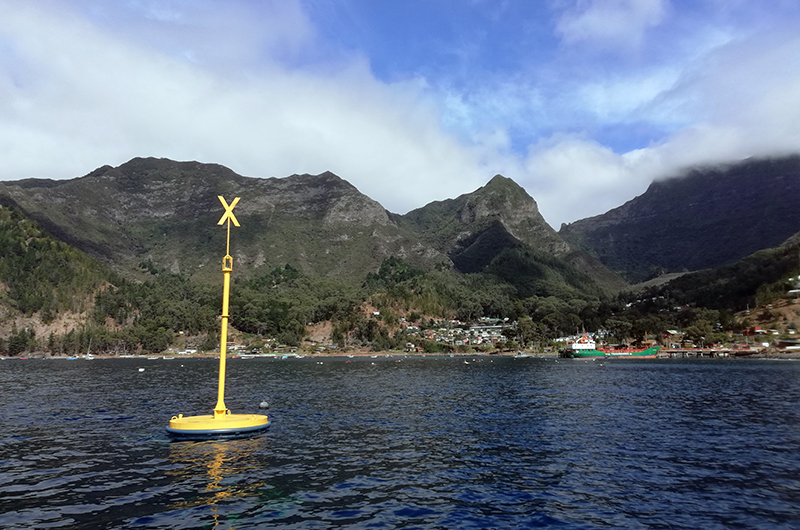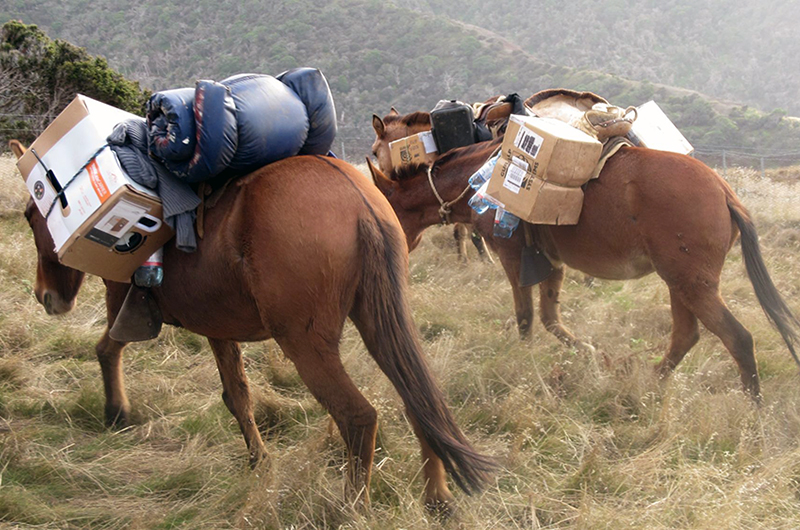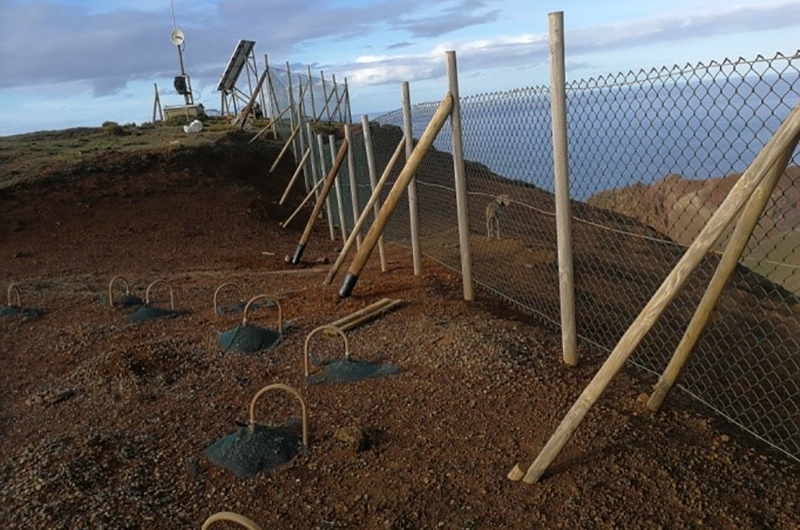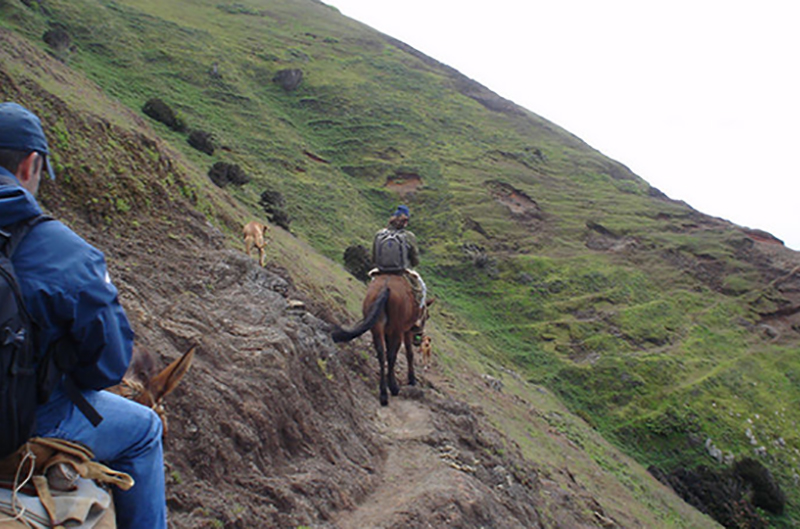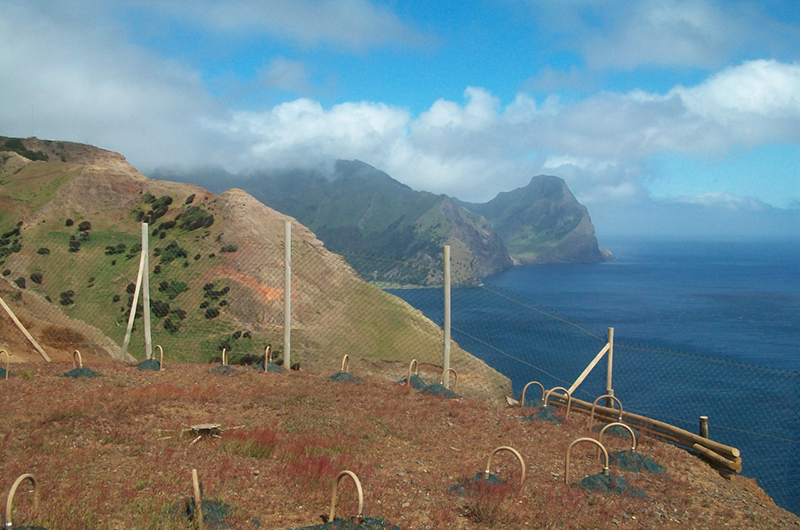IMS stations located in Juan Fernández
Description of Location
The Juan Fernández Archipelago, located in the Pacific Ocean, some 670 km from continental Chile, is made up of three islands: Robinson Crusoe, Alejandro Selkirk and Santa Clara, the latter being a smaller uninhabited island. Robinson Crusoe Island, being the largest, has an area of 47.9 km2 and a single town, San Juan Bautista, where the vast majority of its nearly 1000 inhabitants live. Administratively, the archipelago belongs to the Valparaiso Region of Chile. The three islands of the archipelago rise abruptly from the waters of the Pacific, with few beaches and a limited number of protected bays, possibly formed by ancient volcanic craters. Its isolated location, far from the main human settlements or noise, makes the Juan Fernández Islands an ideal site for both stations of the International Monitoring System (IMS), which corresponds to the hydroacoustic station HA03 and infrasound IS14. The Central Processing Facility (CRF) of both stations of the IMS is located within the town of San Juan Bautista. From here, data is transmitted, almost in real time, to the International Data Center in Vienna, Austria.
Tsunami 27/F
The stations in this town suffered a great change after the earthquake and tsunami that hit our country on February 27, 2010, and also, due to the devastating tsunami that hit hard the populated part of the city where the CRF was also located. The Preparatory Commission for the Comprehensive Nuclear-Test-Ban Treaty Organization (CTBTO) completed its most complex station reconstruction in 2014, led by experts Jerry Stanley, Georgios Haralabus and Mario Zampolli. This effort lasted four years, and involved a cost of more than US$20 million. It is important to point out that this reconstruction wouldn't have been possible without the incessant support of CCHEN officials, led by Guillermo Parada Carvacho, and the Bentos company, which have shown great commitment from the beginning of its installation to date. It is also worth mentioning the support of the signatory countries and the Chilean ambassador at that time, Alfredo Labbé, as well as the Maritime Authority, the Municipality of Juan Fernández and a whole team involved in this great work.
Stations
Hydroacustic technology – HA03 Station
The Hydroacoustic Monitoring Station (HA03) consists of two hydrophone triplets, anchored at approximately 2,000 m depth. One of the triplets is installed to the north and the other to the south of Robinson Crusoe Island. The triplets correspond to an arrangement of three hydrophones, the latter being passive elements that allow the capture of hydroacoustic waves. The triplets are connected to the CRF through optical fiber cable from its location at sea to the power station on land. The CRF contains the electronic equipment that receives and formats the data from the hydroacoustic sensors, which are transmitted remotely and continuously to the International Data Center (IDC) located in Vienna, Austria. The data is transmitted using the Global Communications Infrastructure (GCI) which consists of VSAT (very small aperture terminal) type terminals, with antennas located in the CRF.
Infrasound technology – IS14 Station
Chile has two Infrasonido stations, one located on Robinson Crusoe Island and the other on Rapa Nui. The infrasound stations in general should be located in areas away from strong winds, which is why, when possible, sites with lush forest are chosen, away from the power plants and any artificial source of sound. The sensors of these stations are distributed in a configuration of arrays that measure the micro pressure changes in the atmosphere generated by the propagation of infrasound waves. These waves have a low frequency (<20 Hz), so they are not audible to the human ear. The access to the infrasound sites, in Robinson Crusoe Island, is very complex, since they are located in the hills inside the National Park and there are no roads for vehicles, so the access is made on foot or with equines. In addition, the climatic conditions correspond to very rainy winters on lands with slippery slopes, which generates difficulty for access to the sites in much of the year.
Evaluation and certification
According to the certification process of the CTBT stations, HA03 and IS14 meet all the requirements for this purpose and therefore these two IMS stations are certified. The Factory Acceptance Test and the integration tests for HA03 were completed in 2002, as well as the installation of ground processing equipment. The link to the Global Communications Infrastructure (GCI) was approved in early 2003, after which the underwater segment was installed and the data flow to Vienna was established. After operator training in 2003 and a visit to the station, HA03 was transferred to IMS operations. Subsequently, after the reconstruction of the CRF and the reestablishment of the stations, the stations were re-certified in 2014, which is maintained to date.

